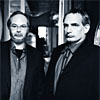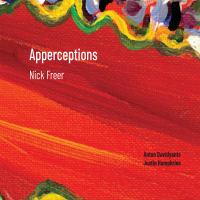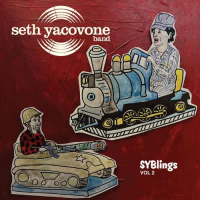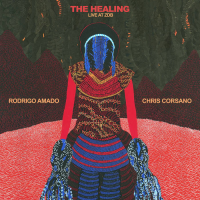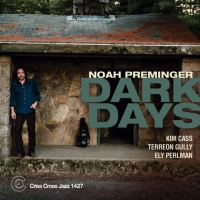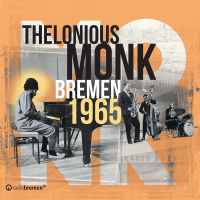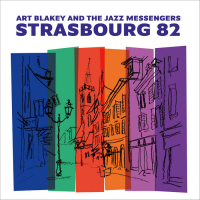Home » Jazz Articles » Album Review » The Alon Farber Hagiga Sextet: Optimistic View
The Alon Farber Hagiga Sextet: Optimistic View
Since their 2005 debut Exposure, Hagiga has added another voice—Omri Mor on piano. Playing in dazzling harmony with Amos Hoffman's guitar, Mor fills out the band's sound, but also develops elaborate solos in entirely new harmonic landscapes.
The pianist's talents compliment the band most notably on "Mystic Seven," named for its seductive 7/4 rhythm. The song starts with a grooving, sinister bass line from Hagai Cohen-Milo. Soon a rapturous melody layers over it, involving piano, guitar and the two saxophones to great effect. When the song is stripped back down to its simple bass line for the solos, the fantastic texturing becomes clear: each soloist in turn is given the freedom of a very bare harmonic landscape, so that each can craft his own unique structure. On other songs as well, it seems that part of Hagiga's aesthetic is to create simple, intriguing foundations, and then give the improvisers their liberty to play.
And indeed, play they do. One needs look no farther than Omri Mor's muscular, crashing lines on "Mystic Seven," or the way that Hagai Amir's alto solo on "Zambura" exhausts the rhythmic possibilities of another original groove. "Zambura" is in itself fascinating: a propulsive tune with offbeat hits and all the hard- edged inventiveness of contemporary New York jazz. But at the center of the melody is the oud, the fretless Arab lute (here played by guitarist Hoffman) which adds an entirely new sense to the music. Despite imminent oud players who record on the fringes of jazz (such as Anouar Brahem), the instrument has yet to make its full entry into the realm of jazz improvisation. Hoffman's lengthy solo on "Zambura" brings the oud much closer to that goal, as he plays eloquently on the interstices between jazz and flamenco.
After all these global idioms, it's even more striking when Optimistic View lands finally on "Bird Cry," a slow two-chord groove recalling the best of Al Green. It's far afield from other songs on the album, but remains characteristically hybrid: the chorus features the two horns playing a scale in contrary directions, echoing the simple, visceral melodies of sub-Saharan jazz forms. Such is Farber's brilliance as a songwriter and arranger—he takes the best from each of the traditions he calls upon, uniting a wide array of colors towards the common end of an exciting, celebratory music.
Track Listing
Optimistic View; Mystic Seven; Smile of the Cat; Don Avignion (for Avi Leibovich); Kundalini; Zambura; Bird Cry/Takasim.
Personnel
Alon Farber
saxophoneAlon Farber: soprano and baritone sax, compositions; Hagai Amir: alto sax; Omri Mor: Piano; Amos Hoffman: guitar, oud; Hagai Cohen-Milo: bass; Dani Benedikt: drums.
Album information
Title: Optimistic View | Year Released: 2009 | Record Label: Fresh Sound New Talent
Tags
PREVIOUS / NEXT
Support All About Jazz
 All About Jazz has been a pillar of jazz since 1995, championing it as an art form and, more importantly, supporting the musicians who make it. Our enduring commitment has made "AAJ" one of the most culturally important websites of its kind, read by hundreds of thousands of fans, musicians and industry figures every month.
All About Jazz has been a pillar of jazz since 1995, championing it as an art form and, more importantly, supporting the musicians who make it. Our enduring commitment has made "AAJ" one of the most culturally important websites of its kind, read by hundreds of thousands of fans, musicians and industry figures every month.



